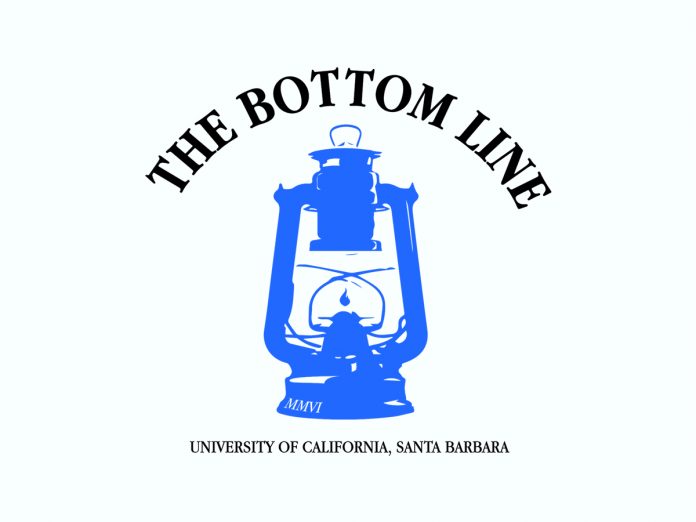Jacob Wong
National Beat Reporter
On Feb. 11, the leadership team for Sunrise Movement UCSB, a new environmental group on campus, gathered in an SRB conference room to watch a recording of a climate change demonstration that had occurred earlier that afternoon.
In the video, a crowd of 15 to 20 Sunrise-affiliated demonstrators gather outside the Los Angeles office of California State Senator Dianne Feinstein, listing a set of demands to her spokesperson that includes divestment from fossil fuel companies and support of the Green New Deal, a piece of climate change legislation authored by House Democrat Alexandria Ocasio-Cortez earlier this month.
When Feinstein’s spokesperson tried to reassure the crowd that the senator is still considering the deal, a demonstrator fired back, “while it is good to take your time, we do not have a lot of time.” Amid cheers of encouragement from the crowd, she declared, “We have no time.”
Echoing this sense of urgency, a student at the Sunrise SB gathering shared, “climate change in the future is going to lead to a situation where it’s all about survival for those who can afford to survive. I think that’s really terrifying and a big part of why I wanted to get involved with this.”
Sunrise SB is a local chapter of the national Sunrise Movement, which is an American-based, youth-driven organization with the goal of combating climate change and economic injustice across the country. UCSB became one of the movement’s most recent additions when it launched on campus in January.
Increasing senatorial sponsorship of the Green New Deal is the movement’s most recent effort in the fight against climate change. While some Democrats have praised the resolution, which seeks to move America to 100 percent clean and renewable energy while securing economic reforms for low-income and working-class Americans, others have been more ambivalent in their response to the Deal.
Sunrise appears to be up to the challenge, however. Though the movement has not been around for long — it was founded in 2017 by climate change activists Evan Weber and Dyanna Jaye — it has grown quickly; the organization currently has hubs, which are organizational points of contact, in 34 states. For many of Sunrise’s members, the movement’s appeal is rooted in the opportunity to make their voice heard.
“It feels like for the first time there’s a way to fight back against these forces that are inherent, such as the politicians and big business,” explained Maithilee Kanthi, one of Sunrise SB’s hub coordinators. “Sunrise Movement gives us the opportunity to challenge [these forces] and actually imagine for a second that if we get enough people to care and make ourselves loud enough, we might actually see the results we want.”
Over the course of its two-year history, being loud enough has never been an issue for the movement. Sunrise has been a grassroots movement in every sense of the word; mass phone calls, Twitter campaigns, and demonstrations at political offices such as Feinstein’s are all common tactics that the movement utilizes to spread its message.
One of the primary motivators behind Sunrise is the idea that Americans are running out of time. “Global climate change is one of the most important public policy issues of our time,” stated David Pellow, a UCSB professor and program chair for the university’s Environmental Studies department, in an email statement to The Bottom Line. “Unfortunately, the Trump regime’s refusal to address this issue contributes to massive negative impacts on our ecosystems.”
“The Sunrise Movement has been quite successful at…mobilizing support for pro-climate policies and for public officials who have pledged to address climate change,” added Pellow.
The movement made a splash last November when a group of Sunrise demonstrators occupied the Capitol Hill office of leading House Democrat and current Speaker Nancy Pelosi, earning national media attention and even a guest appearance by the recently-elected Ocasio-Cortez. A livestream of the demonstration on the movement’s national Facebook page currently has over 180,000 views.
Rose, another hub coordinator for Sunrise SB, was at the Washington demonstrations and believes the movement’s message can translate back in Santa Barbara. “I was taking the last six months off from school to organize full time with Sunrise on the East Coast for their fellowship program, and I’m super excited to bring that momentum back to UCSB,” she said.
“Santa Barbara has a long history of being exploited by the oil and gas industry, and we think that making this a local issue will help energize the people here,” added Rose. “When Sunrise eventually needs a national call to action, that’s the way we can get people there.”
For Sunrise UCSB, there will be many more politicians to pressure and demonstrations to be had in the coming months, especially in the buildup to the 2020 election. However, for now it appears that the organization’s best strategy might be to win over the members residing in its own surrounding community.











